

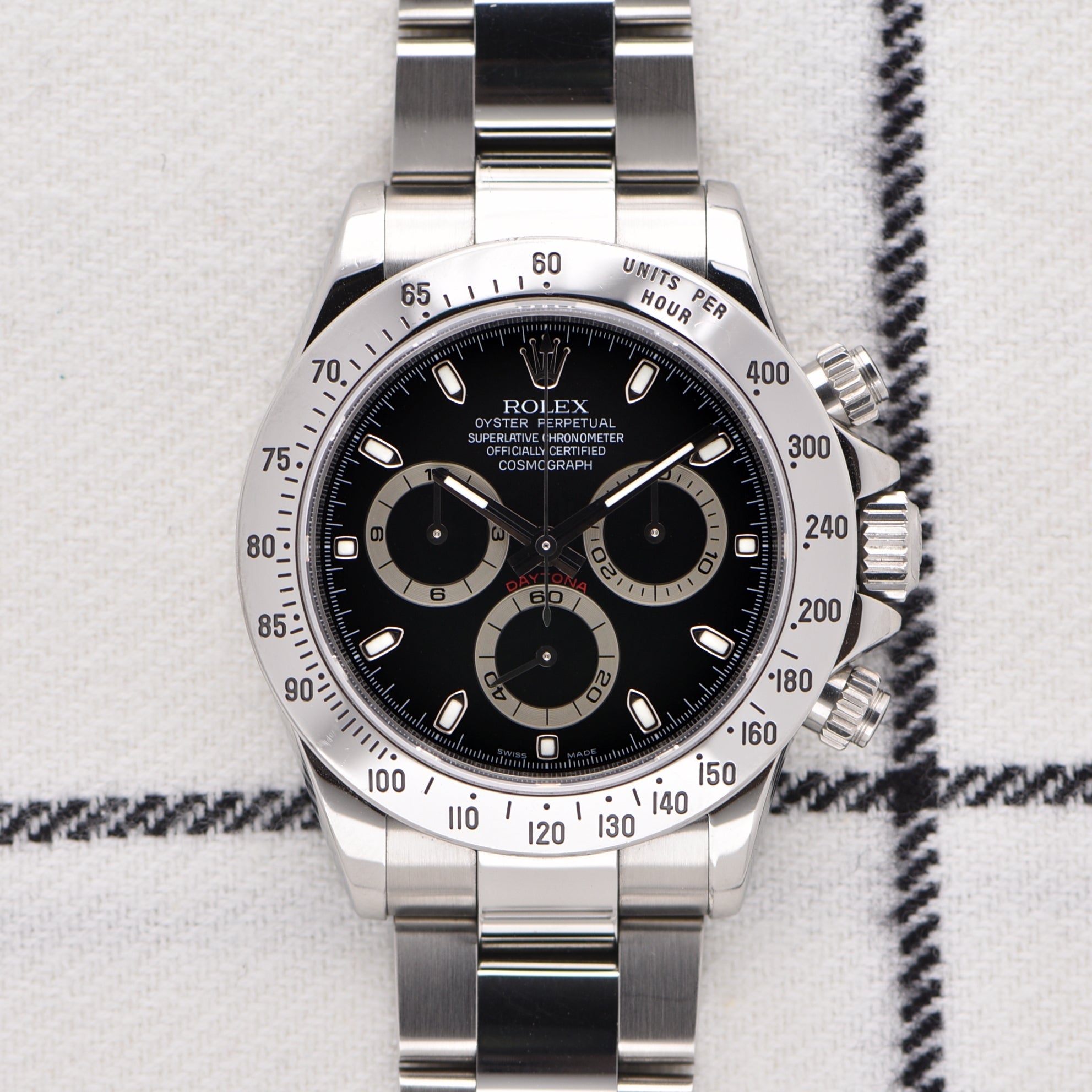
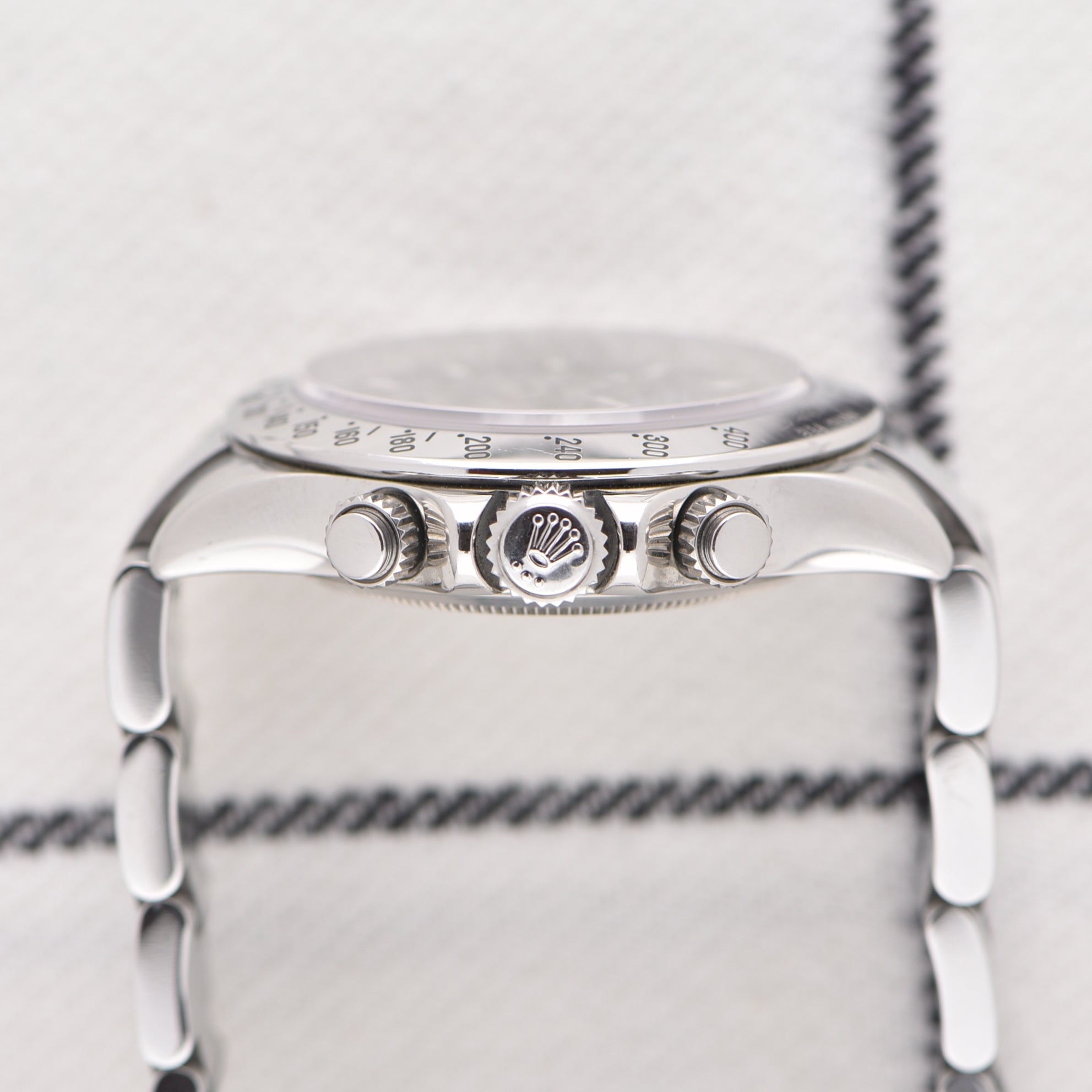
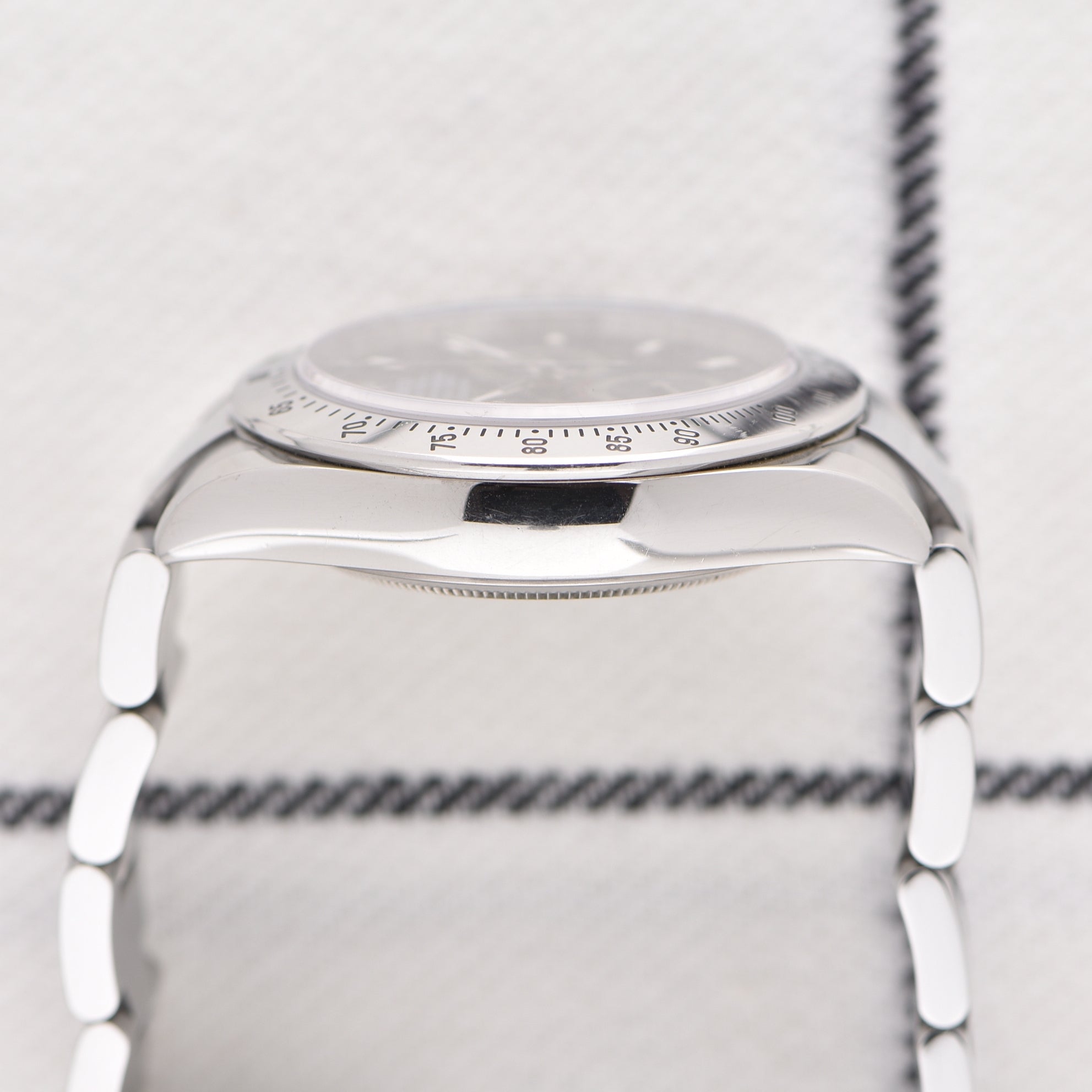
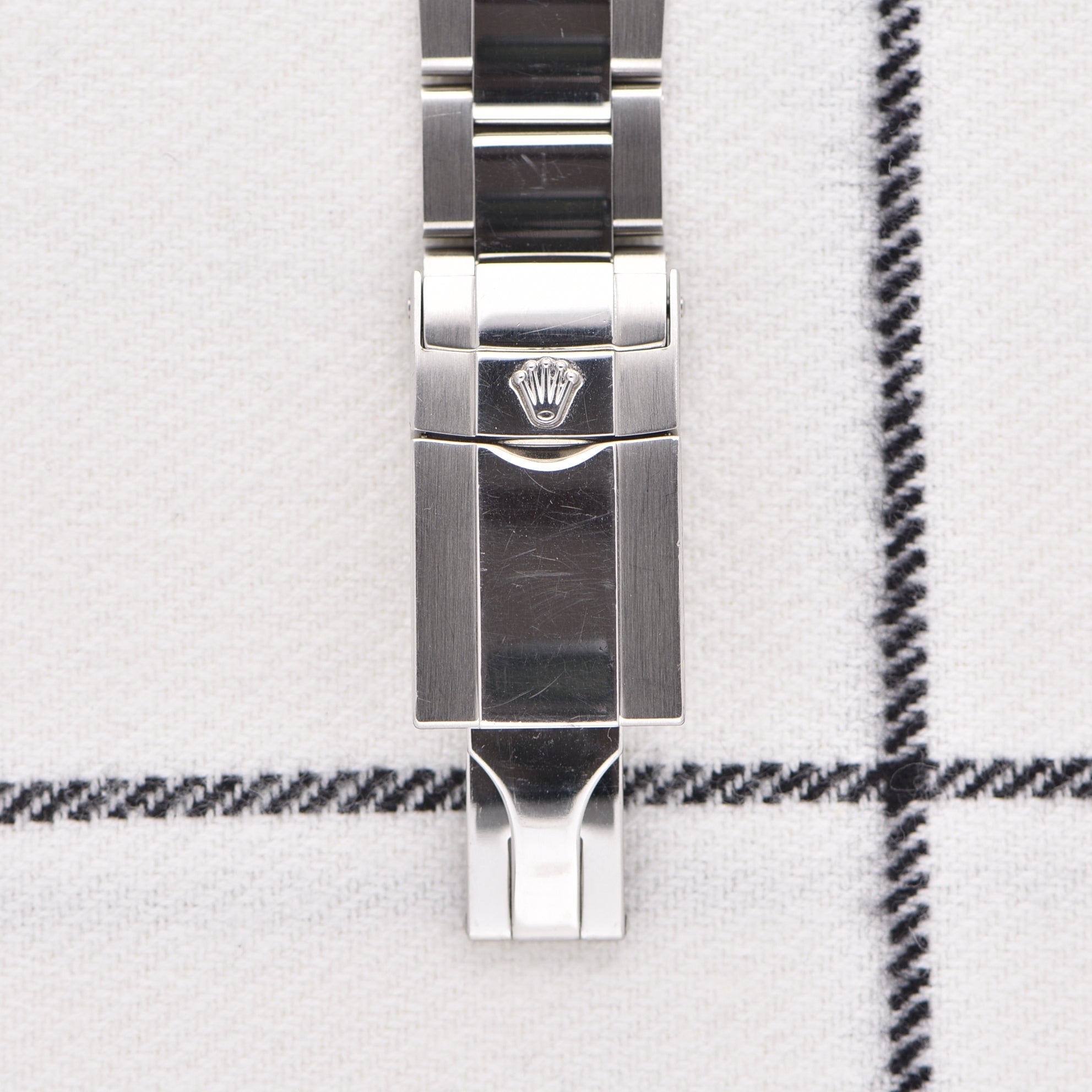
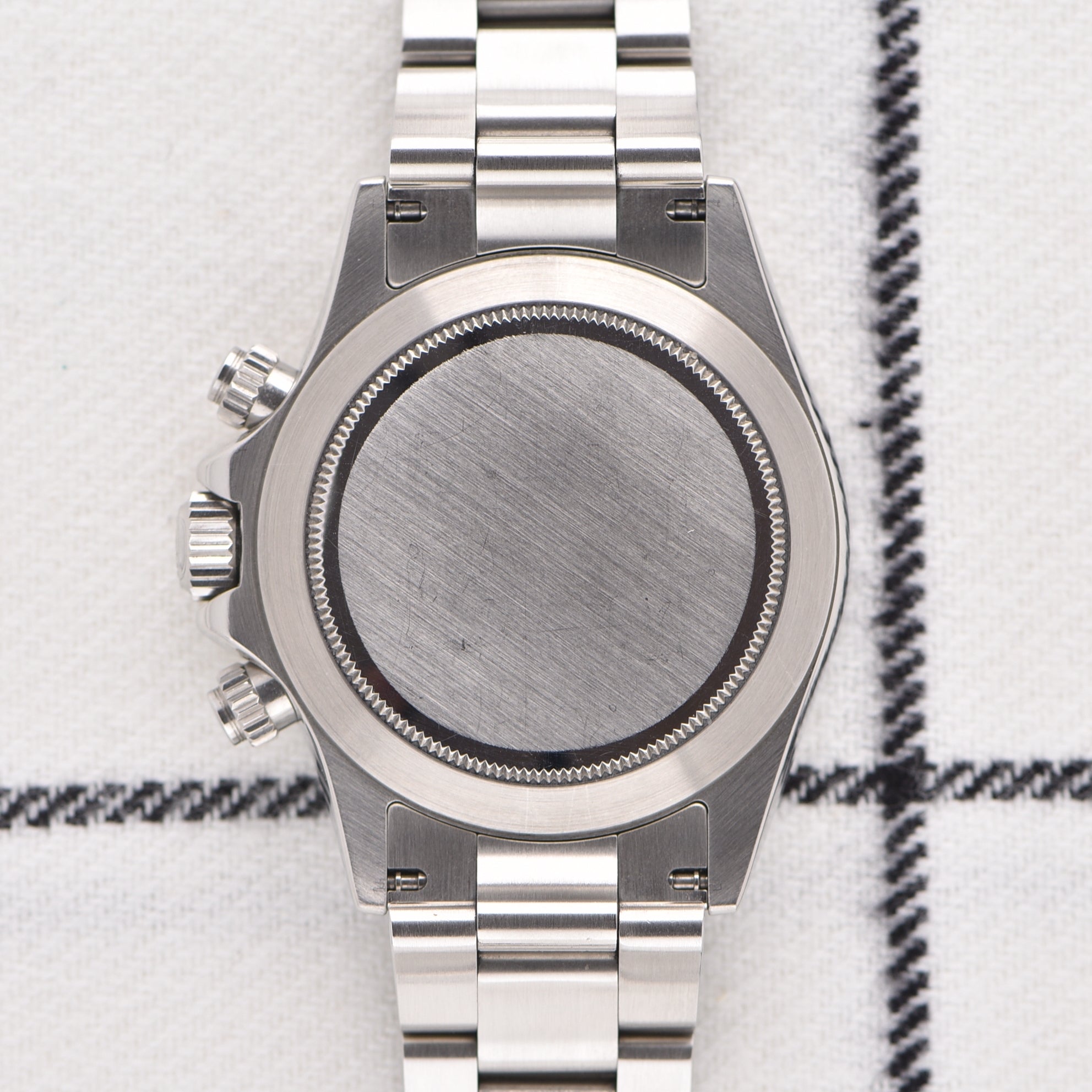
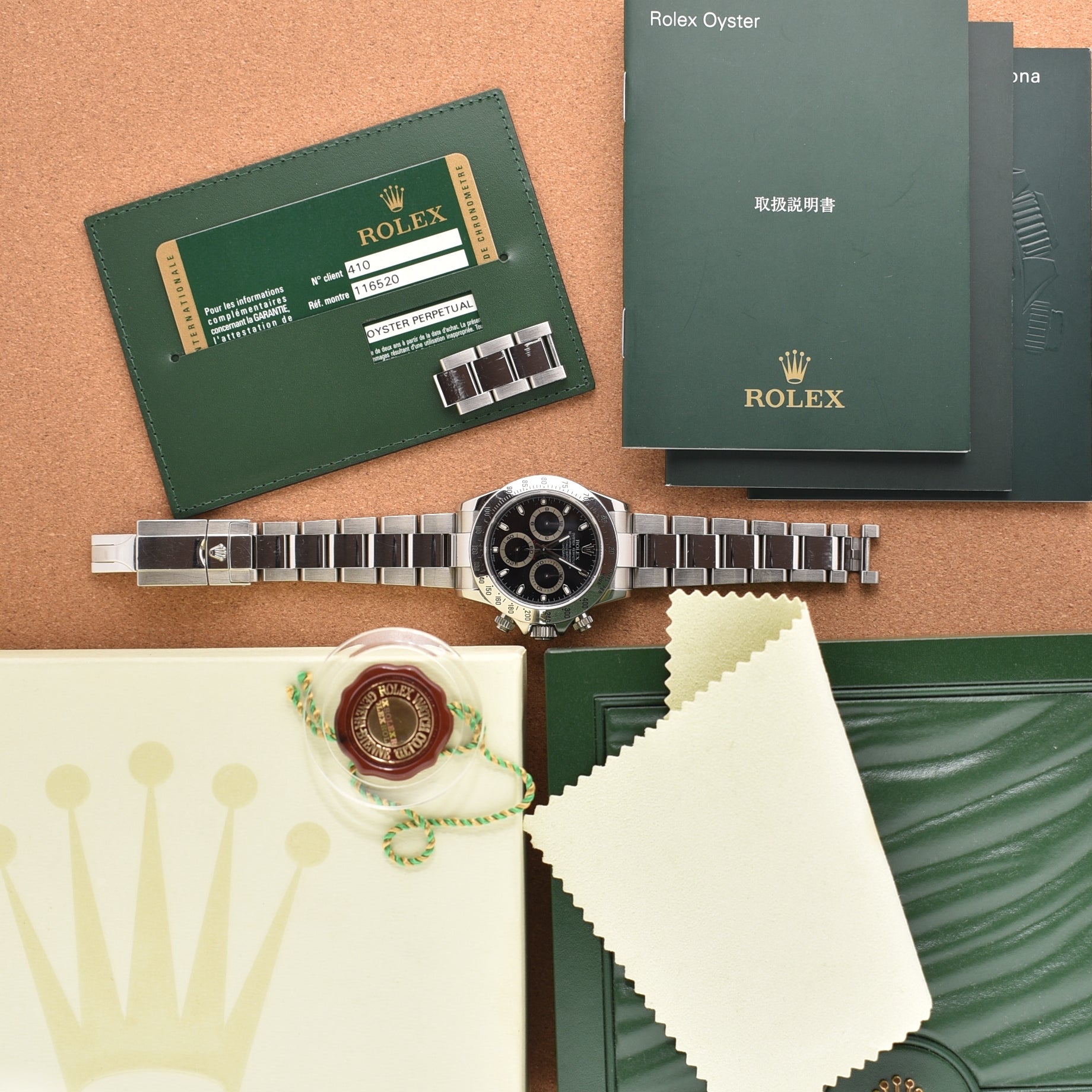

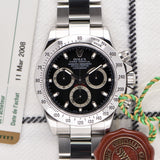
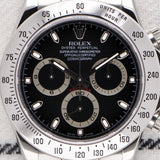
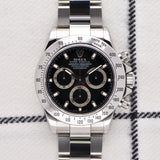
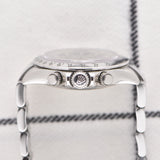
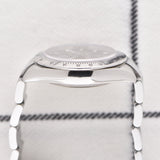
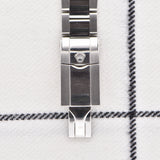
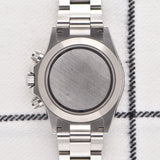

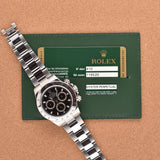
(Pending) 2008 Rolex Daytona Black Dial - Box & Papers
- Reference 116520
- Papers, Booklets, Boxes, Hangtag, Bezel protector, and booklet/paper holder
- Wire Price $18,000
- Specifications
- The Story
- The Brand
Year: 2008
Model: Daytona
Case Diameter: 40mm
Lug to Lug: 47mm
Case: Stainless Steel
Condition: No significant wear as seen
Dial: Black
Movement: Automatic
Condition
The case looks to be unpolished with normal wear throughout. The dial and hands are very clean and the automatic m housed inside is perfect. The bracelet comes with all its links and has no stretch.
Rolex began experimenting with mechanical chronographs in the 1930s, but it wasn't until 1963 with the introduction of the reference 6239 that the "Daytona" name was given to their chronograph line of watches. The ref. 6239 marked the first time in Rolex history that inverted colors were used for the chronograph registers and the tachymeter scale was engraved on the bezel, which has since become one of the defining characteristics of Rolex's Daytona line of watches.
Changes through the years include the addition of contrasting sub-dials and the relocation of the tachymeter scale to the bezel, giving the watch a more chunky and sports-oriented look than the Rolex chronographs that preceded it. The ref. 6239 also pre-dates the implementation of screw-down chronograph pushers, which are still present on contemporary Daytona watches that Rolex manufactures today.
In 1988, the Daytona ref. 16520 marked the first major change in the production of the Daytona: the implementation of a self-winding movement. This was followed by the introduction of the ref. 116520 in 2000, which marked the long-awaited introduction of a true in-house movement, known as the Caliber 4130.
The most recent update to the Rolex Daytona was the ref. 116500LN in 2016, which swapped out the steel bezel of the ref. 116520 for one constructed from Cerachrom (Rolex's proprietary ceramic compound). The stainless steel construction of the ref. 116500LN guaranteed a much more accessible price point and immediately became the international must-have watch of the year.
This, being the reference 116520, features a steel bezel and closer similarities to the Zenith Daytona. The example for sale comes with its original box and papers, with all the booklets and contents seen.
Wilsdorf & Davis was initially a watch importer, but by 1908, Wilsdorf had registered 'Rolex' as a trademark. The name was chosen after trial and error, with some believing it was taken from the phrase 'horological Excellence' or because the word sounds like a watch being wound. Wilsdorf was aware of the power of branding and began a long campaign to get the new company name on the watches he exported. The relationship between Rolex and Aegler started the same year that Wilsdorf & Davis set up the business, placing the largest order for wristwatches ever seen. Wilsdorf was attracted by Aegler's commitment to the highest quality, as their movements were extremely accurate and small. In 1910, one of Rolex's models won a First Class Chronometer Certificate from the rating office in Bienne, Switzerland, and in 1914, another piece became the first ever wristwatch to be granted a Class A Chronometer Certificate from the Kew Observatory in England, the only non-marine timepiece to ever achieve it. The firm of Wilsdorf & Davis became synonymous with a commitment to uncompromising excellence.
WWI in 1914 led to the rebranding of Wilsdorf & Davis as Rolex in 1915. The British government imposed a 33.3% tax on luxury goods, forcing Rolex to relocate to Bienne. Despite the war, the wristwatch proved its utility, as it was used by soldiers during combat and in the field. Rolex produced trench watches, using Aegler's small movements for wearability. By the end of the war, wristwatches became a utilitarian accessory for men. In the years between the wars, Rolex asserted its independence, partnering with Carl F. Bucherer to resist the Federation of Swiss Watch Manufacturers. In 1926, Rolex introduced the Oyster case, making wristwatches waterproof, dustproof, and robust. Wilsdorf capitalized on this innovation by installing Rolex Ambassadors, or 'Testimonies', with celebrities as a marketing masterstroke.
During WWII, Switzerland retained its neutrality, meaning that it was one of the few countries not forced to shut down watch manufacturing to supply the war effort. As a result, by the end of hostilities, the Swiss watch industry was way ahead of other nations. Rolex truly came of age in the 1950s by launching some of the most enduring legends in watchmaking, such as the Explorer, Submariner, GMT-Master, Day-Date, and Milgauss.
The quartz crisis of the 1970s and 80s forced the company to change tactics but ultimately repositioned itself as the purveyor of the ultimate luxury lifestyle. Today, the name Rolex is synonymous with refinement, opulence, and personal accomplishment. The Rolex brand as we know it today is the byproduct of an unrelenting drive for excellence and over a hundred years of refinement and development, all in pursuit of the brand’s singular goal of making the world’s best wristwatch.
(Pending) 2008 Rolex Daytona Black Dial - Box & Papers
Authenticity Guaranteed
All our watches are carefully inspected to insure and guarantee the authenticity.
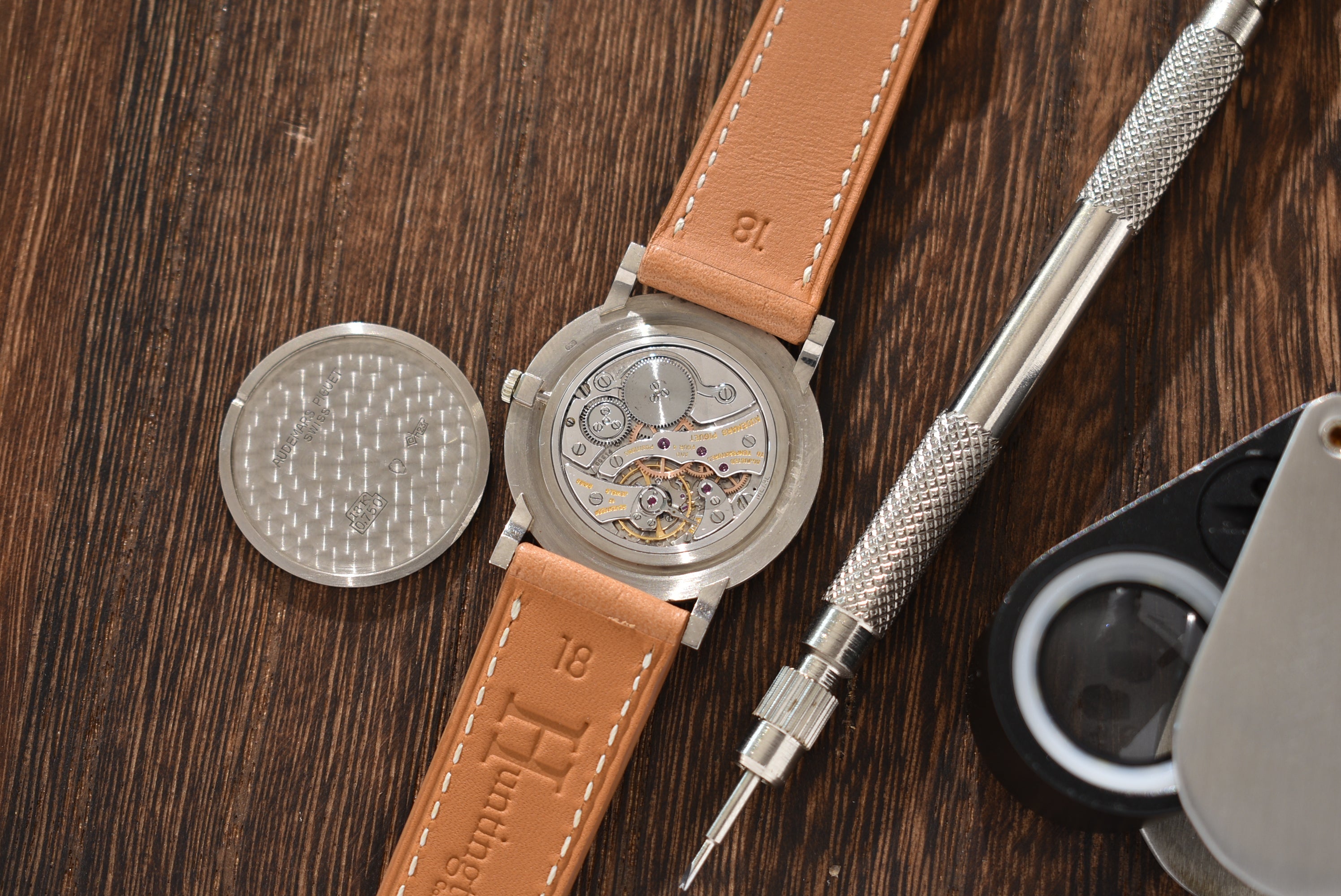
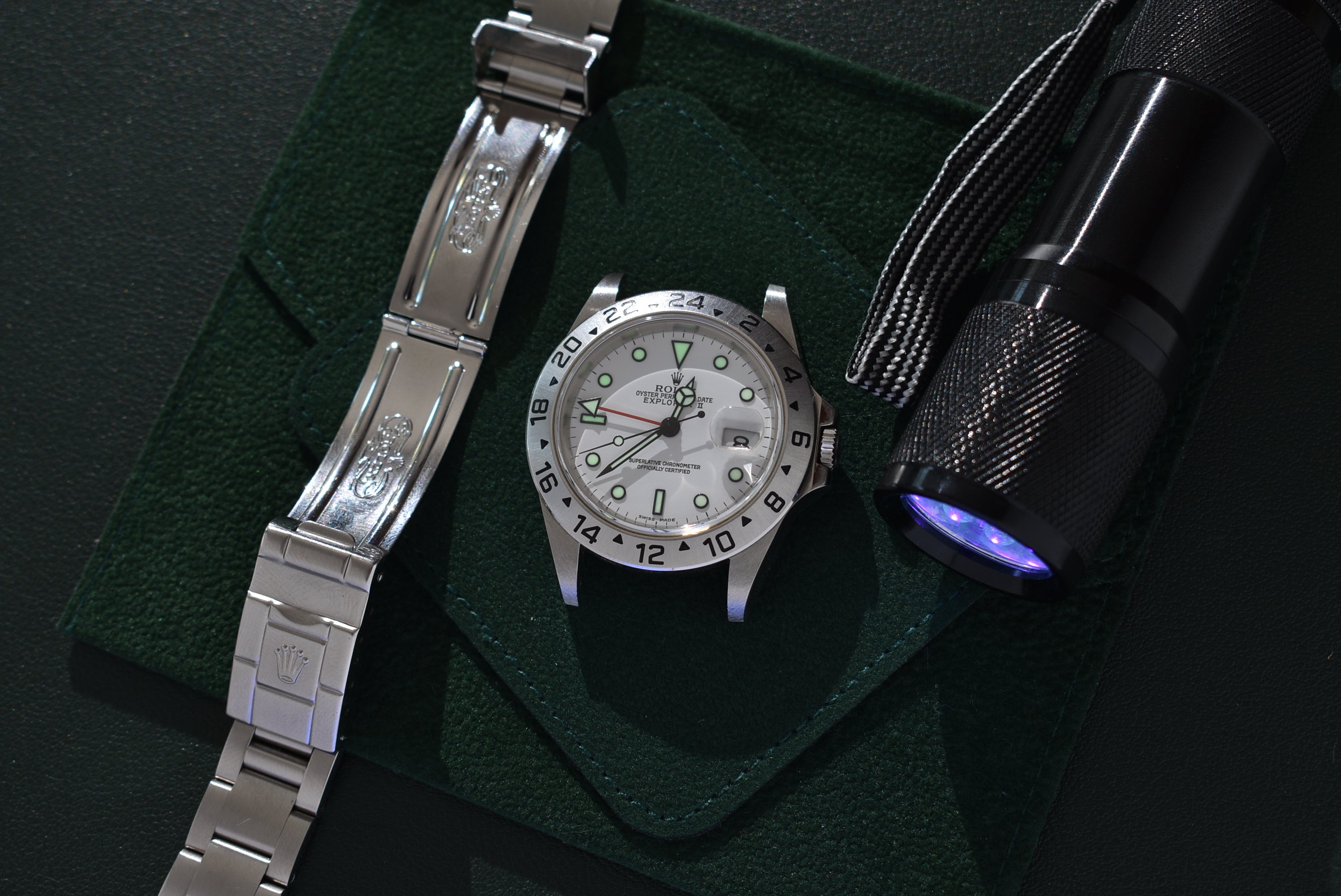
The Details
All our watches are scrutinized during inspection to make sure our descriptions are as accurate as possible.
- Recently viewed
